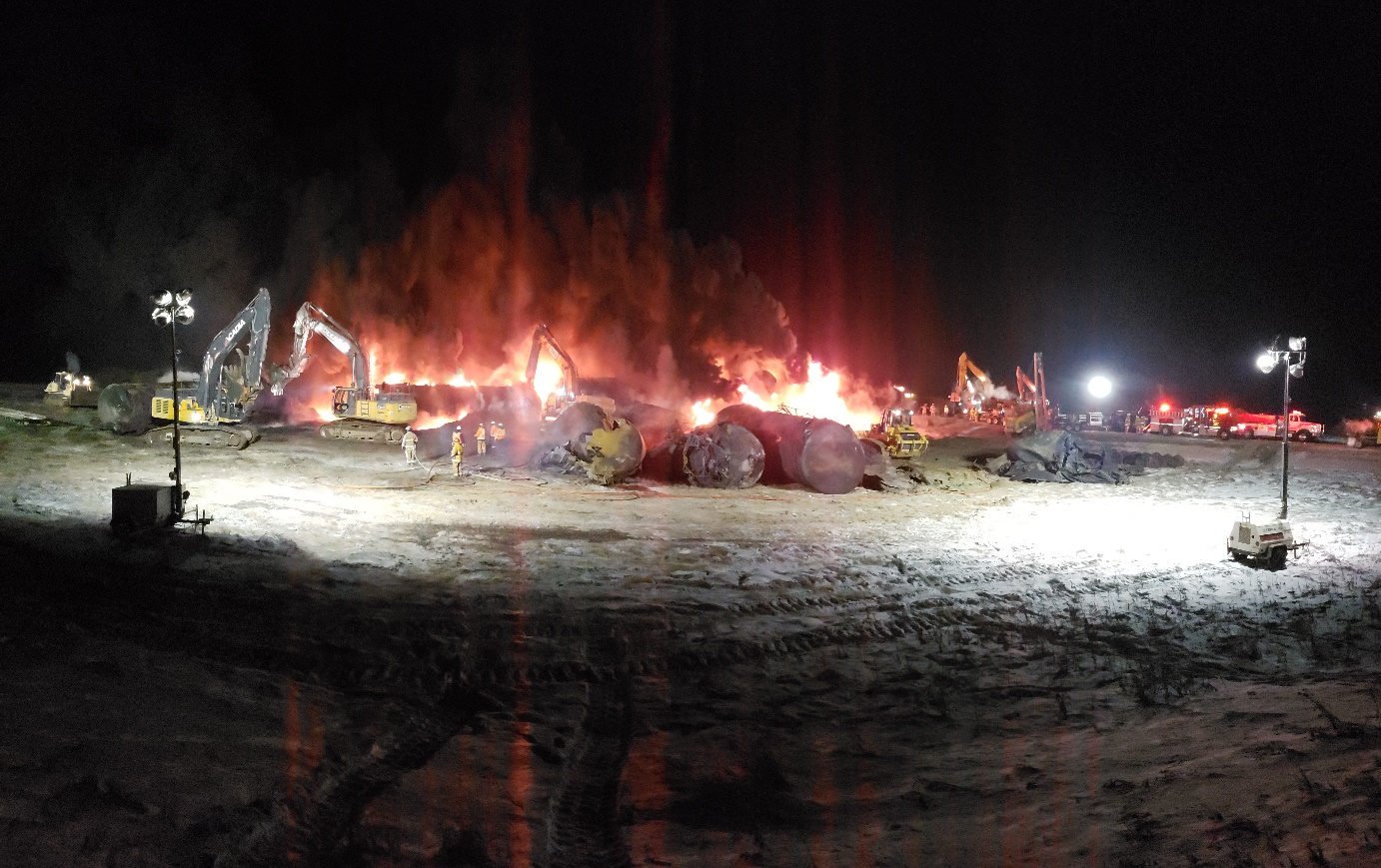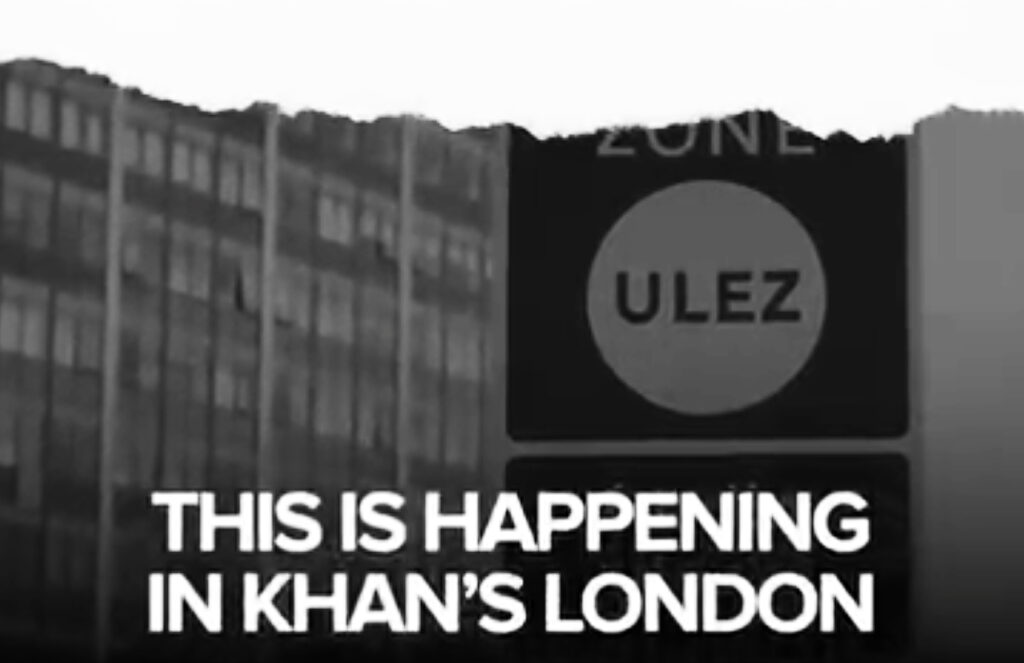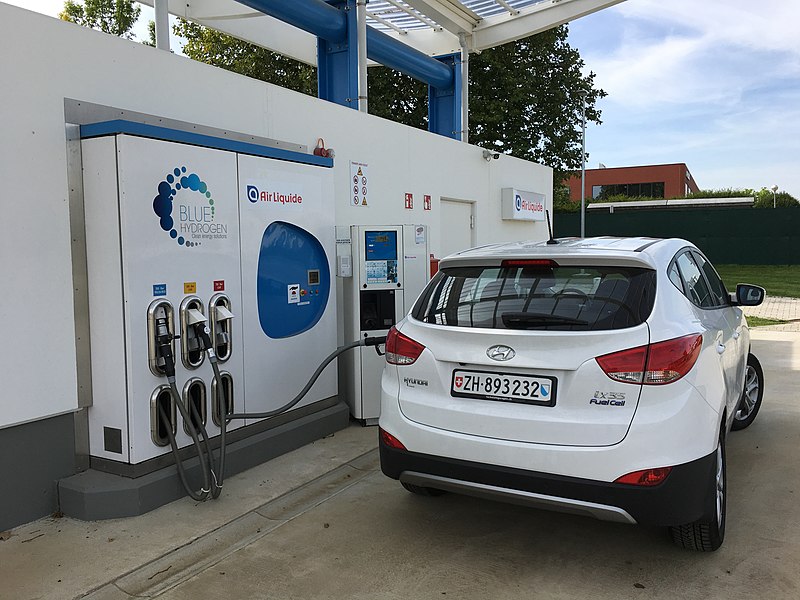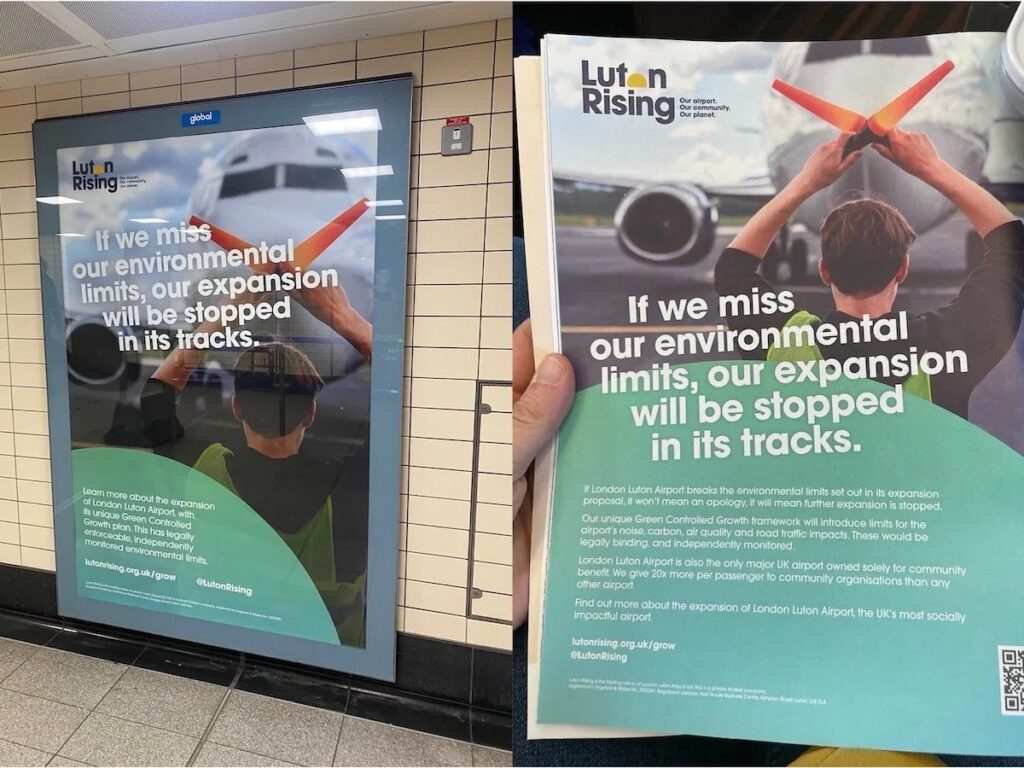As 2019 drew to a close and the new year ramps up, a number of signs point to the growing risks of transporting oil and gas by rail, with little government oversight to speak of: from increasing oil train traffic into the U.S. to fiery oil train derailments and new approvals for moving liquefied natural gas (LNG) by rail.
In early December, a train carrying oil from Alberta, Canada, and destined for Oklahoma, home to the biggest oil distribution hub in the U.S., derailed shortly after departing from the loading facility. Many of the oil tank cars ruptured and spilled large amounts of oil, which caught on fire. The train spilled 400,000 gallons of oil and burned for 24 hours.
Initial comments from the rail company tried to downplay the incident.
“Unclear if any crude was spilled … “
You have GOT to be kidding. What do you think is burning? pic.twitter.com/w9cqeyWOXL
— Marvin Beatty (@Marvin_Beatty) December 9, 2019
To put that in perspective, the 2010 pipeline spill of Canadian tar sands oil into Michigan’s Kalamazoo River released just over one million gallons and took several years and over a billion dollars to clean up.
While this oil train derailment was another in a growing series involving large spills and fires, the event received little media coverage. The Transportation Safety Board of Canada assured the public that “no waterways” were affected, and by December 20, CBC reported that Canadian Pacific, the rail company that operated the train, had workers beginning to scrape away the contaminated soil.
Among the limited coverage of the incident, CTV News reported comments from “railway expert” Mark Hemmes, who said, “I’m always surprised when a derailment occurs and there’s a fire. That’s a very unusual situation.” Hemmes currently serves as CEO of a firm that monitors grain movements for the government. Sure, grain trains don’t catch fire when they derail, but oil trains usually do.
This is not the first oil train to derail in Canada. Starting in 2013 with the oil train accident in Lac-Mégantic, all four of the derailments involving unit trains of Canadian oil have involved major oil spills and most have involved fires that have burned for days.
The deadly 2013 oil train accident in Lac-Mégantic, Quebec, which spilled oil, caused a fiery explosion, and killed 47 people, was only the most high-profile in a string of oil train derailments and fires which suggest what happened in December was not at all unusual for a derailed oil train.
In 2015, two oil trains derailed in Gogama, Ontario, over the course of three weeks, and both involved large spills into the local river while the trains each burned for days. Not every oil train accident has resulted in a fire, but the majority of oil train derailments in North America have.
This latest accident in Canada had local residents counting their good luck.
“I’m just thankful for where it was, and not in the village of Guernsey or Lanigan. It happened in a fairly unpopulated area,” said one local resident.
As oil trains continue to derail, rupture, and burn, the evidence continues to build that oil trains are being operated unsafely in both Canada and the U.S., and that the main thing protecting the public from another disaster like the one in Lac-Mégantic has been luck.
In 2016, the Washington Post reported National Transportation Safety Board chairman Christopher Hart’s concerns about oil trains and the role of luck for the U.S. so far.
“We’ve been lucky thus far that derailments involving flammable liquids in America have not yet occurred in a populated area,” Hart said. “But an American version of Lac-Mégantic could happen at any time. Instead of happening out in the middle of a wheat field, it could happen in the middle of a big city.”
Canada to Increase Volumes of Oil Exported to the U.S. by Rail
This latest oil train fire and spill highlights the risks to communities across North America as the Canadian oil industry prepares to greatly increase the volume of oil it moves to American ports and refineries.
More oil was moved by rail out of Canada in 2019 than any of the previous years. The amounts expected for 2020 are much higher. The record monthly total for Canadian oil by rail was just over 350,000 barrels per day. Predictions for 2020 are for volumes of 550,000 barrels per day.
Combined volumes of oil transported by rail from Canada and the U.S. are slated to be the highest ever, setting up a wave of dangerous oil trains poised to cross North America this year, despite clearly documented risks to the public.
LNG Poses New Risk on the Rails in the U.S.
The same day that the latest Canadian oil train began leaking 400,000 gallons of oil, and caught fire, U.S. regulators approved a special permit allowing the company Energy Transport Solutions to begin moving liquefied natural gas (LNG) by rail between Pennsylvania and New Jersey. LNG is a super-cooled form of natural gas that turns it into a liquid for ease of storage and transport, and this permit proposed using the same cryogenic rail cars used to move other super-cooled liquids.
As DeSmog has documented for the past few years, the rail industry also has been pushing for new regulations allowing trains to transport solely LNG without any new safety requirements, and this special permit approval was expected.
The special permit, which expires in 2021, likely won’t be required much longer as the Trump administration has been fast-tracking broad approval for LNG rail transport with no new safety regulations for this hazardous material. The public comment period for the proposed rule from the Pipeline and Hazardous Materials Safety Administration (PHMSA) ends on January 13. Comments submitted so far show great opposition to the regulation, with more criticism coming from members of Congress.
BREAKING: Trump’s DOT just announced it’s moving forward on a plan to move LNG by rail car, which Chair @RepPeterDeFazio strongly objects to due to unanswered questions about the risk to public safety. His floor speech about why this is such a dangerous below. pic.twitter.com/aBQgmCfhuo
— Committee on Transportation and Infrastructure (@TransportDems) October 18, 2019
As part of those comments, the National Transportation Safety Board (NTSB) submitted a letter warning of the risks of the new LNG-by-rail regulation, concluding:
“In summary, the NTSB believes that it would be detrimental to public safety if PHMSA were to authorize the transportation of LNG by rail with unvalidated tank cars and lacking operational controls that are afforded other hazardous materials such as flammable liquids…”
The NTSB outlines such risks as “fireballs, flash fire, and explosions from ground-level vapor clouds that may vigorously expand far beyond the point of release to an ignition source, cryogenic material thermal exposure hazards, and asphyxiation hazards for a colorless and odorless gas.”
This independent federal agency previously warned about using unsafe tank cars for moving oil by rail and the risks of another Lac-Mégantic-style disaster, warnings which appear to have fallen on deaf ears. Under the current industry-friendly administration, expect this latest hazardous material by rail approval to sail through as well.
Rail Industry Leading on Climate Denial
One reason the rail industry may be so eager to embrace moving a new form of dangerous cargo is that its traditional cash cow — the U.S. coal business — has been rapidly declining. As of 2018, coal represented less than 16 percent of rail revenue compared to roughly 25 percent for intermodal cargo, or shipping containers moved by rail.
Coal as a percentage of U.S. rail revenue compared to intermodal freight. Credit: Association of American Railroads
With the rail industry so dependent on coal, perhaps it shouldn’t come as a surprise that the industry has been a leader in pushing climate science denial. A scientific paper published in late 2019 by social scientist Robert Brulle found that the rail industry’s main lobbying group — the Association of American Railroads (AAR) — was the most active organization across all industries in its efforts to promote climate science denial and delay.
“We can now identify railroads as an integral component of opposition to climate action,” Brulle told The Atlantic.
The Atlantic also featured the work of an ambitious group of students from Brown University who tracked the rail industry’s recent funding of pro-coal groups such as the American Coalition for Clean Coal Electricity.
The lead researcher of that effort, student Cole Triedman, told The Atlantic that the AAR funded “eight of the most effective and toxically regressive, really harmful climate-denial front groups over the last three decades.”
As a 2019 report from Oil Change International documented, natural gas (whether or not it’s liquid) represents an obstacle to reducing climate change emissions and addressing the climate crisis. However, both the natural gas and rail industries seem eager to embrace the rise of another fossil fuel even as the last decade of climate science showed dangerous planetary tipping points drawing near.
Bomb Train Risks Increase in 2020 and Beyond
I spent the last six years documenting the risks of moving oil and ethanol by rail, and in 2019 I published my book Bomb Trains: How Industry Greed and Regulatory Failure Put the Public at Risk.
Unfortunately — as I explain in the book — little has been done to address these well-documented risks to the public, water, air, and land.
The book documents the regulatory failures that prioritize protecting corporate profits and continue to put so many people at risk as oil trains pass through their communities across North America.
Despite years of evidence showing the dangers of using inadequate rail tank cars to move highly volatile liquids including Bakken crude oil, Canadian dilbit, and liquefied propane, another flammable fossil fuel, liquefied natural gas, will be joining them on the rails soon.
The National Transportation Safety Board has been warning about such risks of moving flammable materials by rail in unsafe tank cars since 1991, but regulators have consistently followed the wishes of the oil and gas industry.
When the Trump administration rolled back another major safety regulation enacted under Obama — a requirement to have at least two-person crews on trains — the Federal Railroad Administration openly admitted that its priority was not to protect the public but to avoid getting in the way of corporate innovation. In its decision, the agency wrote, the Department of Transportation’s “approach to achieving safety improvements begins with a focus on removing unnecessary barriers and issuing voluntary guidance, rather than regulations that could stifle innovation.”
The National Transportation Safety Board was warning about the dangers of moving oil by rail in unsafe tank cars before the deadly disaster in Lac-Mégantic, and calls out this history in its letter to PHMSA: “Recent history with unit train shipments of ethanol and crude oil demonstrate how unprepared federal regulators were to address the spate of fiery flammable liquids accidents that occurred between 2009 and 2015,” when the Obama administration enacted some oil train safety measures that have now been reversed.
The NTSB continues to warn about these risks — including opposing the proposed rule to allow LNG-by-rail — but if past is prelude, the regulatory and market conditions show North America is poised for another rise in “bomb trains.”
Some incredible images of the CP train derailment courtesy of Chief Barry Hooper of the Lanigan Fire Department. #sask pic.twitter.com/CGUx3vTmD3
— Ryan Kessler (@RyanKGlobal) December 10, 2019
Main image: R19W0320 accident site Derailment looking south Credit: Transportation Safety Board of Canada, CC BY–NC–ND 2.0
Subscribe to our newsletter
Stay up to date with DeSmog news and alerts







